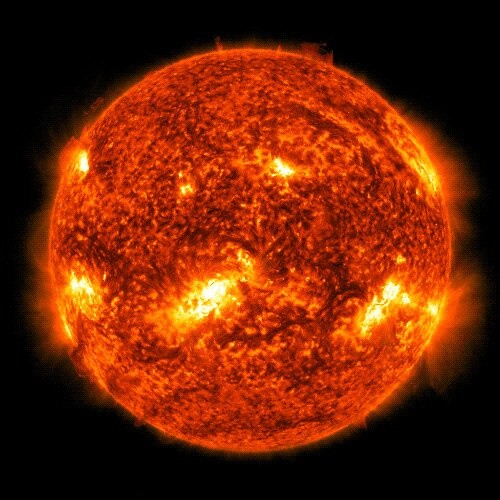The Sun ejected an intense solar flare on Tuesday, Jan. 10. NASA's Solar Dynamic Observatory was able to capture this stunningly fiery event.
According to NASA's blog post, the strong flare peaked at 5:47 PM. SDO's image features a subset of extreme ultraviolet light that represents the hot material in flares, brimming with hues of red and gold.

Intense Energy Explosions
Flares from the sun are intense energy explosions. These eruptions can affect power grids, radio communications, satellites, and other infrastructure.
The flare that SDO captured is classified as an X1.0 flare. NASA explains that the X has the strongest flares, while the following number indicates its intensity.
A solar flare is typically a radiation hailing from the magnetic energy of sunspots. These flares are also considered the biggest explosive events in our solar system. They appear as glowing regions of the sun and can last for minutes to hours.
NASA notes that a solar flare is normally viewed by the photons or light that it ejects at every wavelength of the spectrum. The most common ways of viewing them are through optical light and x-rays.
Additionally, flares are accelerating ground for various particles such as protons, electrons, and heavier particles.
Are Solar Flares Harmful?
Solar flares have historically had a substantial impact on people and objects in space, especially those who are residing at the International Space Station (ISS).
Astronauts and spacecraft can install solar shields to protect themselves from UV rays since orbiters do not have an ozone-like layer of protection.
Even though a solar flare's intense heat cannot reach our planet, electromagnetic radiation and energetic particles can. When a GPS satellite, for example, transmits a signal to Earth, there may be temporary interruptions in the high atmosphere that cause the signal to be off by many meters.
There is also another solar outburst that is even more damaging, which is referred to as coronal mass ejections or CMEs. It also sends electromagnetic waves and particle bursts into the Earth's atmosphere.
These variations could result in ground-level electric variations that could destroy transformers in power systems. Particles from a CME can potentially collide with a satellite's critical electronics, causing the satellite's systems to malfunction.
Solar Cycle 25
Sunspots are studied by scientists to track the Sun's activities, and they have found that the Sun's magnetic poles move every 11 years. During this time, the Sun reaches its solar maximum, which is characterized by a significant increase in sunspot activity.
The 25th solar cycle of the sun, which will likely peak in July 2025, is currently underway.
In 2022, an increase in solar activity has been recorded. Government weather agencies in the US and the UK reported that geomagnetic storms had struck our planet in March.
In July, the Earth experienced a G1-class geomagnetic storm, which led to vivid auroras over Canada's skies. On July 15, the Sun also unleashed a strong solar flare that was reportedly capable of creating global radio blackouts.
Related Article : 'Portrait of the Sun:' World's Most Powerful Solar Telescope Snaps The Face of the Sun in Crisp Detail

ⓒ 2026 TECHTIMES.com All rights reserved. Do not reproduce without permission.




